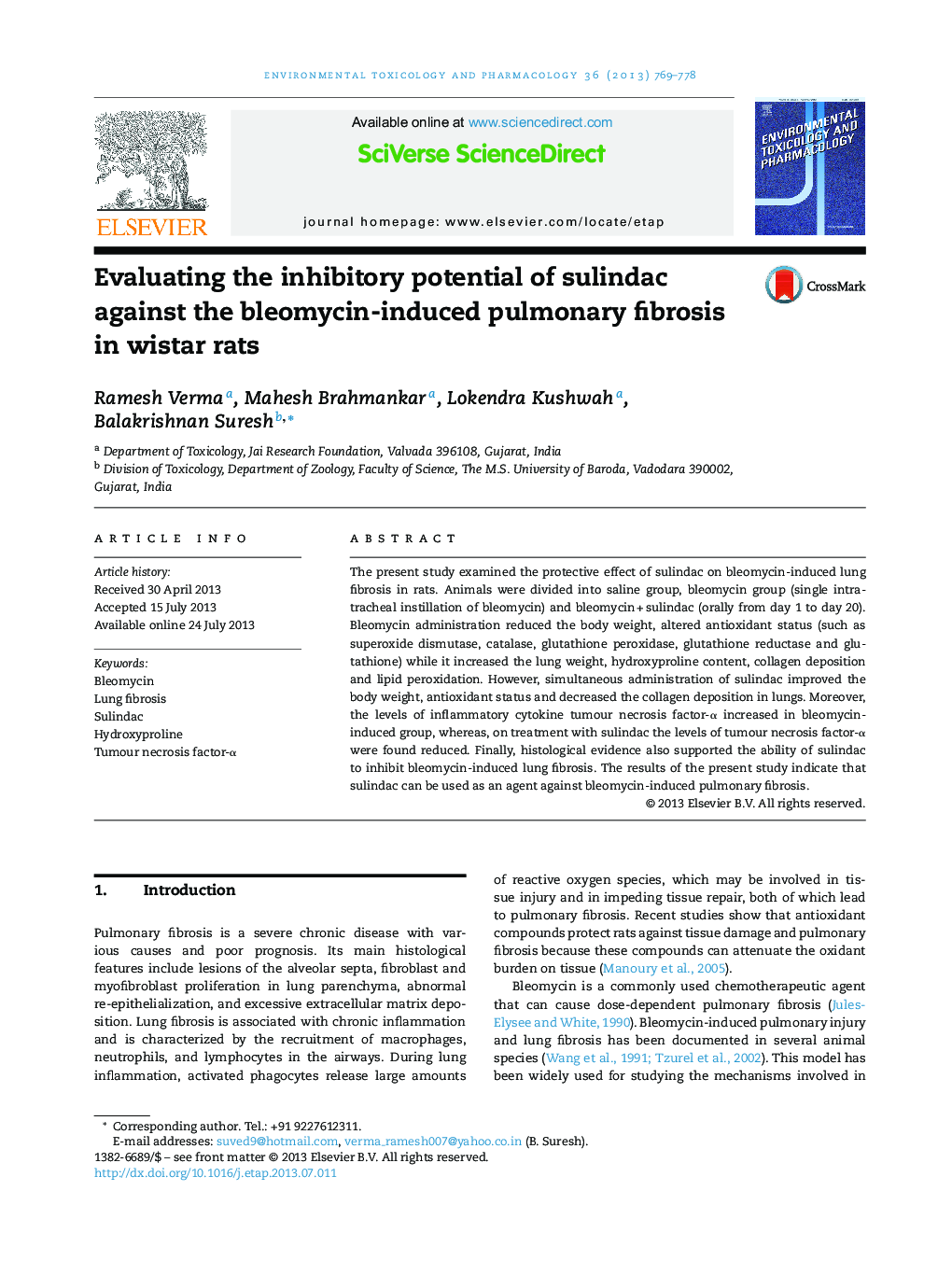| Article ID | Journal | Published Year | Pages | File Type |
|---|---|---|---|---|
| 2583072 | Environmental Toxicology and Pharmacology | 2013 | 10 Pages |
•Bleomycin administration reduced the antioxidant and increase hydroxyproline content.•Bleomycin also increased collagen deposition, lipid peroxidation and cytokine TNF-α.•Sulindac treatment improved antioxidant status and decreased the collagen deposition.•Level of cytokine TNF-α in sulindac group was comparable to the control group.•Histologically also sulindac inhibited bleomycin-induced pathological alterations.
The present study examined the protective effect of sulindac on bleomycin-induced lung fibrosis in rats. Animals were divided into saline group, bleomycin group (single intra-tracheal instillation of bleomycin) and bleomycin + sulindac (orally from day 1 to day 20). Bleomycin administration reduced the body weight, altered antioxidant status (such as superoxide dismutase, catalase, glutathione peroxidase, glutathione reductase and glutathione) while it increased the lung weight, hydroxyproline content, collagen deposition and lipid peroxidation. However, simultaneous administration of sulindac improved the body weight, antioxidant status and decreased the collagen deposition in lungs. Moreover, the levels of inflammatory cytokine tumour necrosis factor-α increased in bleomycin-induced group, whereas, on treatment with sulindac the levels of tumour necrosis factor-α were found reduced. Finally, histological evidence also supported the ability of sulindac to inhibit bleomycin-induced lung fibrosis. The results of the present study indicate that sulindac can be used as an agent against bleomycin-induced pulmonary fibrosis.
